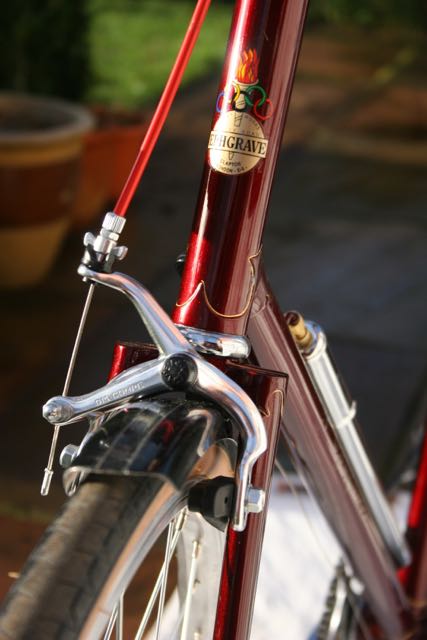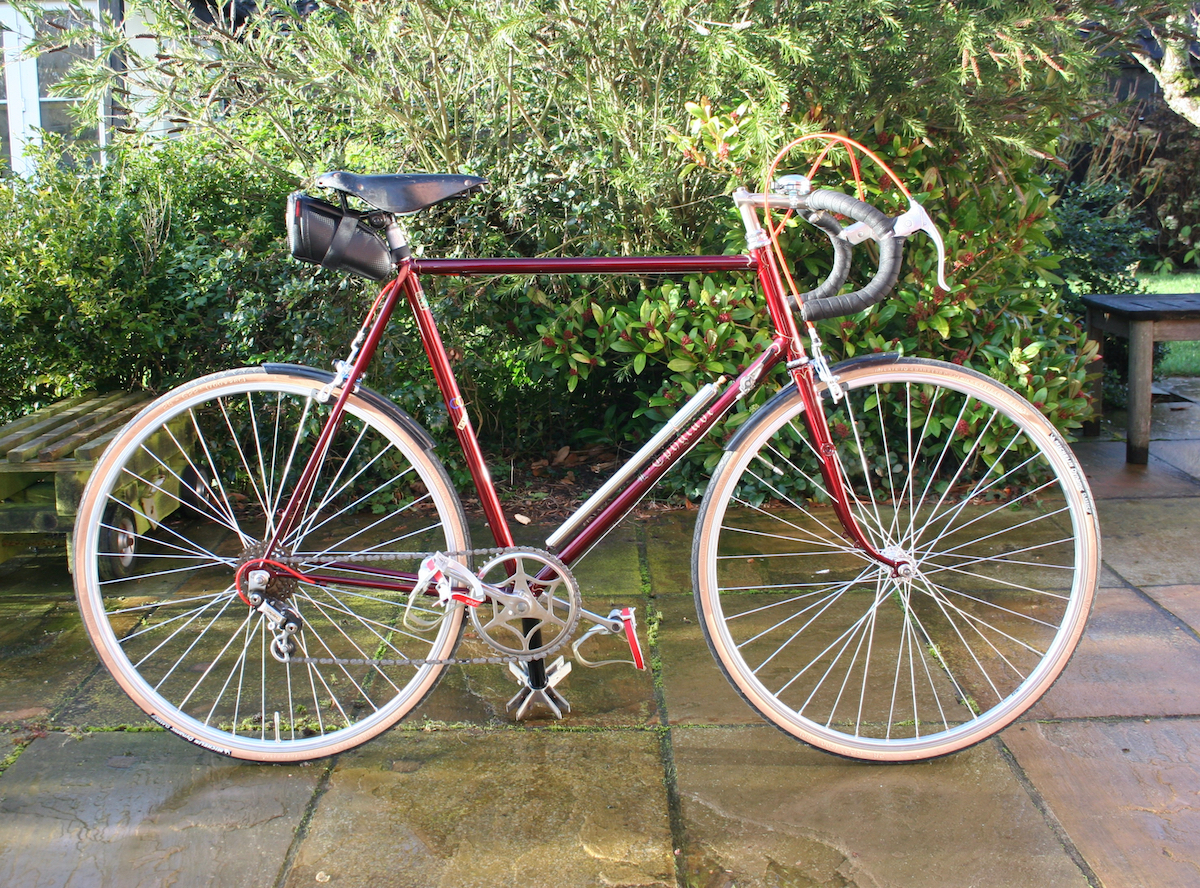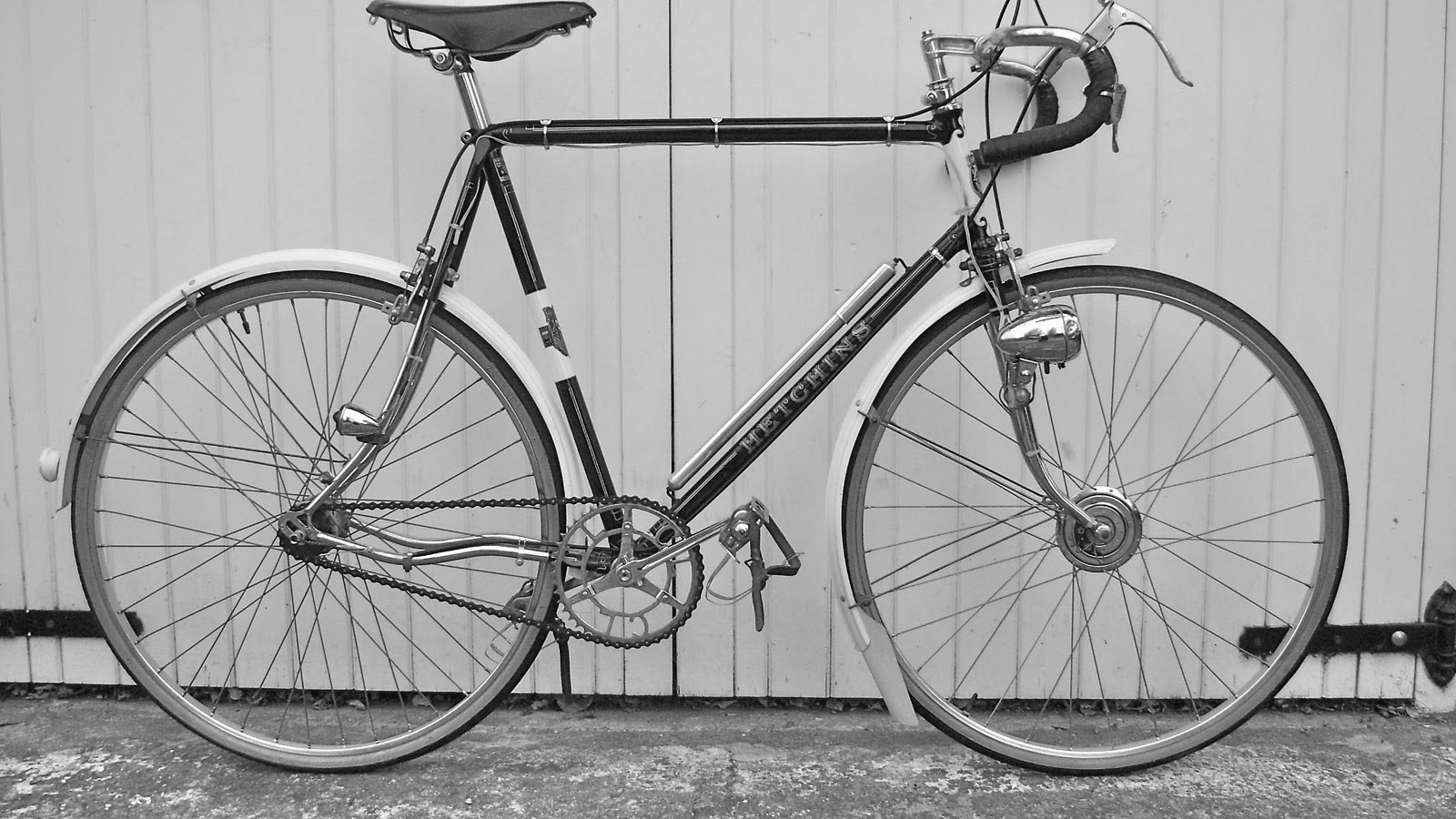Ephgrave 'Italia' 1952
Posted: Monday 21st December 2020
I began serious cycling in early 1950 when I was just under 15. This was due to the influence of a schoolfriend who, along with his father, was a member of the Ipswich branch of the Cyclists Touring Club. I owned a Raleigh bicycle which had dropped handlebars but no other sporting attributes. I can see from various certificates that I progressed quite rapidly in terms of daily mileages covered. I exceeded 150 miles in the Summer of 1951, when I was 16.
In the Spring of 1952, my mother suddenly suggested that I might like a better bike. This amazed me as she was the only breadwinner and frequently complained about being short of money so whilst I accepted the suggestion, I felt that I should keep to a modest specification. In Ipswich in the early 1950s Ephgraves were the frame of choice. They were built to order by Les. Ephgrave in a small workshop in Clapton, East London. I chose the cheapest lugged version, termed the Italia. When it arrived, resplendent in metallic bronze I fitted it out with steel wheels, chainset, handlebars and brakes plus a 3 speed Benelux derailleur. The wheels were 26 inch … a CTC influence.
About 3 weeks later I crashed into the back of a parked car and the frame had to be returned to the makers for a new top tube and down tube. It came back in a slightly different shade of metallic bronze. I broke my nose in the crash but that healed itself …. no need to involve The Maker for that repair!

In the Autumn of 1953 I went off to University, taking my Ephgrave with me. There was a slight hiccup as I travelled by train, for the first time with a bike, and when I alighted in Nottingham there was no bike …..it had remained in the goods van. Fortunately, after I had spoken to Station staff, it was returned the next day. I discovered that the University had a cycling club and as it happened three of us joined that year, all with racing ambitions.
We headed for the hills of the Peak District quite often …a novelty for a Suffolk bred lad like me. I almost always cycled the 135 miles between Ipswich and Nottingham at the beginning and end of terms and once cycled from Nottingham to Brighton, where my sister lived, and then back again 2 days later …a round trip of about 360 miles.
In the Spring of 1954 I took advantage of my maximum value (due to parental poverty) State Scholarship to order another Ephgrave, a track frame this time, which I used for time trials of up to 50 miles but then , I can’t remember why, sold the frame to a friend. In 1955 I ordered a Mercian “King of Mercia” which I later managed to get transported free of charge via the brother of a friend when I graduated and went to California in the Autumn of 1956. California had some good cycling country but it was all spoiled by the smog which had unpleasant effects if you exercised vigorously.
I returned to the UK in the Autumn of 1957 along with my Mercian, but never really returned to serious cycling. A few years later, now married , I sold the Mercian as I had been offered an appointment in California. We went there but returned to the UK after 2 years.
For about 8 years my original Ephgrave had been in the “care” of my mother but once we had settled in Berkshire I retrieved it, did a bit of restoration in the mid 1970s and then loaned it to my son to use when he went to Cambridge in 1983. For this useage I installed a single freewheel and flat handlebars with a wickerwork basket. When it returned in 1986 it had a stretched bottom bracket and very shabby paintwork presumably from being piled up amongst lesser bikes so I sent it away for repair and a respray in plain black. Subsequently I used it only very infrequently.
Sometime in 2019, now retired and back in Suffolk, a relatively new neighbour was looking in my garage as we stood talking and commented that that looked like a useful bike lurking in there. It turned out that he’d done a good deal of cycling himself so I explained briefly about its history. This comment lingered in my brain and then, shortly after the advent of Covid 19, I decided to restore the Ephgrave.. an ideal project for lockdown.
Restoration:
I first had to dismantle the Ephgrave and this was straightforward until I encountered the well known problem of the seized seat pillar. It had been in place for over 30 years after all. The application of Plus Gas daily for two weeks achieved nothing but the liberal application to the pillar of an aerosol freezing mixture followed by the serious use of some 18 inch Stillsons got things moving albeit gradually and with some surface damage to the aluminium pillar.
The GB Kromo handlebar extension required the same treatment. The freezing mixture claimed to cool things to -50 Celsius. I then contacted Argos Racing Cycles of Bristol which was founded by a Nottingham University mechanical engineering graduate with whom I had coincided as a student. Following their instructions I fitted lengths of threaded stud between the forks in case of rough handling during transport, packed things into a large cardboard box intended for transporting new bicycles and sent the package off to Bristol.
I specified a few additions and alterations such as brazed on cable stops and gear lever boss (which I had omitted from my original economy spec. of 1952) plus cold setting of the forks to more closely match present day hubs. I chose Dark Flam Red with gold lug lining and a set of Ephgrave and Reynolds 531 transfers. The painting process involved six coats of paint followed by two coats of clear lacquer with an oven bake between each coat.
The matter of whether to aim for authentic 1950s originality [ including frame finish] or to do some updating was raised during a telephone conversation with Argos but as many of the original components had disappeared and finding replacements in decent condition might have proved difficult I chose a “hybrid” restoration …. retaining as many of the fittings as possible but with some exceptions such as wheels, brake calipers, chain, brake and gear change cables. I also wanted to achieve a more coordinated colour scheme.
The whole purchasing period coincided with my being told by my GP that I needed to shield myself from Covid 19 so there was to be no visiting cycle shops. All had to be done via the Internet. I made one amusing boob when ordering the new brake cables ….the website said “pear” against the cables which I took to be a spelling mistake but when I had a look at the delivered goods there was only one brake cable there ….I then realised that “pear” referred to the shape of the cable end nipple as there was another option termed “barrel”. Having watched a few videos on cable cutting I bought a proper cable cutter.
This purchasing phase brought home to me how much bicycle design had changed since my active days in the 1950s ….wheel and tyre sizes, the proliferation of multiple gears and the necessary changes to rear hub design, pedals and cycling shoe developments. I avoided the latter by retaining my 1980s Shimano pedals and Christophe toe clips (although with smart new red leather straps).

Regarding wheels I replaced the old steel 26×1 ¼ inch ones with Raleigh Trubuild in 700C size which I thought ought to fit quite nicely, with Mach 1 rims and track nuts (more appropriate to the early 1950s than QR). There was some future proofing here as I thought that 26×1 ¼ inch tyres were becoming rare beasts. The rear hub was 130 mm. between locknuts but I was able to reduce it whilst keeping the rim central between the locknuts to 122mm. by dint of shuffling spacers and making a new one out of a track nut. This brought the hub close enough to the new cold set 120mm rear spacing of the frame and left enough space for my existing 1980s Shimano 5 speed screw on freewheel. This shuffling entailed buying some special thin “cone spanners” …..my existing tool kit couldn’t cope with the new-fangled slim-line cones. I also replaced the supplied track nuts with more deluxe versions which featured free-running washers which I thought would be kinder to the new paint.
In keeping with the 1950s theme I chose amber walled 28 mm. Michelin Dynamic Classic tyres. I found that I could fit the tyres by hand – no need for the snazzy stainless steel tyre levers that I had bought specially. I noticed that the Michelins included a small graph of tyre pressure versus weight of rider which implied a maximum rider weight of 80 Kg. Fortunately I weighed in at 75 Kg. This wheel/tyre choice was rather an economy measure but my thinking was that, being in my mid-80s, I was never going to get back into competitive cycling and it would be an easy matter to upgrade the wheels and tyres anyway if I felt the need.
The new wheel size impacted on choice of brake calipers…..getting the correct “drop”, and I chose single pivot calipers as being more in period than the newer dual pivot design. The modern concealed caliper fixing required the frame to be modified (bored out and sleeved) in order to accommodate the increased diameter. There was a potential tactical error regarding the selection of brakes as I only started buying new components after I had sent off the frame …it would have been safer to delay specifying the brakes until I had the frame and new wheels to hand so that the required drop for the calipers could have been measured directly rather than estimated. Fortunately I identified some calipers (Dia Compe 505Q) with a drop range of 45-57 mm. which theoretically accommodated my calculated requirements of 49 front and 57 rear and turned out to fit very nicely.

Regarding overall colour scheme I have already mentioned the Dark Flam Red finish plus gold lug outlining and gold “Ephgrave” transfers. I continued the red theme a bit with red outer cables for brakes and gears plus red leather Christophe toe straps. I intend eventually to discard the 1980s San Marco saddle, which is slightly damaged anyway, and replace it with a new Brooks B17 ( like the original 1952 one) perhaps with a matching black leather Brooks tool bag As an experiment I used tin snips to cut down the 1980s black plastic mudguards to a “shortie” style as I liked that appearance and would probably avoid using the restored bike in the rain anyway.
Again, it would be trivial to change them if I changed my mind. I cleaned up the old Weinmann alloy brake levers and GB “Road Champion” bars, all of which I bought originally for my second Ephgrave in 1954. The 1954 GB extension looked rather tired but I didn’t know of any reliable local replating service so I thought that I’d use it as it was, at least initially. I was glad, for old time’s sake, that I was able to retain the handlebars, extension, brake levers, saddle and pedals as these are the points of contact when riding.
When it came to reassembly I found that I had to scrape away paint in order to fit the wheels into the front and rear dropouts, from within the bores which accommodated the brake bolts and particularly on the newly brazed on Simplex gear lever boss on the downtube The GB extension refused to fit into the new Tange head fitting and head tube so I had to resort to angle grinding followed by emery paper which yielded a very accurate fit, In contrast I had to shim the seat pillar with an offcut from a Stella Artois beer can in order to attain an appropriate fit.
I rejected the lurid green plastic valve caps that came with the new inner tubes and bought some more discreet aluminium ones. I noticed that valve caps, particularly for mountain bikes, came in a huge range of jazzy colours and designs. I purchased a chromium plated Raleigh 16 inch pump which fitted onto the original pump pegs on the down tube. The overall theme for my Ephgrave is, therefore, mostly red but with some chromium plate and polished aluminium and a few gold and black highlights.
The illustrations show the original appearance after dismantling and also the refurbished machine. As mentioned above, 700C wheels fit very well into a frame designed for 26 inch wheels giving smaller but sufficient clearances and useable brake drop requirements. I think that the colour scheme is attractive ….suitably dignified for a 68 year old machine and an 85 year old owner.
I must pay tribute to Argos Racing Cycles who were so helpful during two telephone conversations and who did an immaculate job on the frame …….. not cheap but well worth it for such excellent service. I shall cherish the machine from now onwards and hope to hand it on eventually to someone in my family.
Posted: Monday 21st December 2020
This article appears in the following categories.
Upcoming Events
Whether you are looking for a gentle social meet up, or a 100-mile ride browse the community’s upcoming events and plan your next weekend outing.
